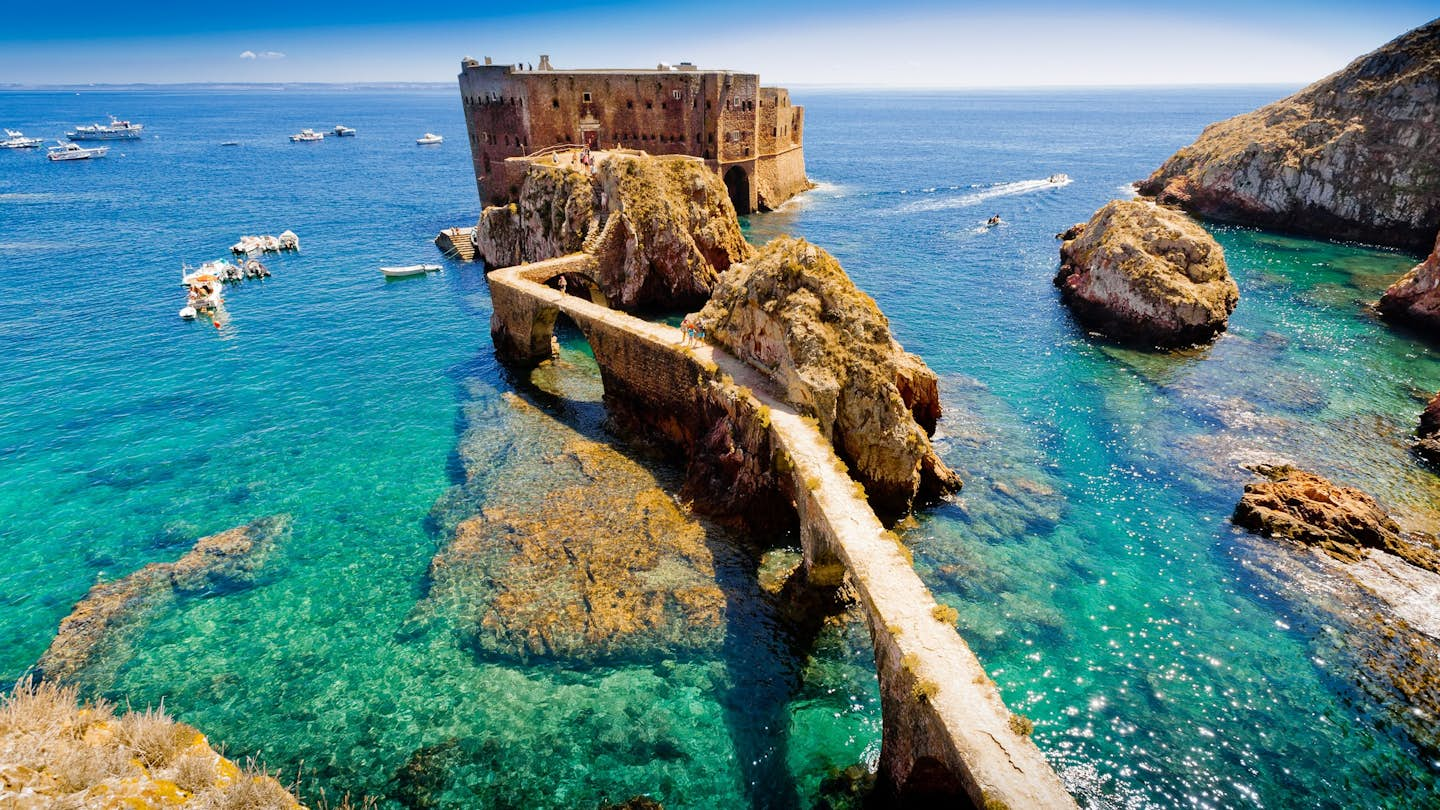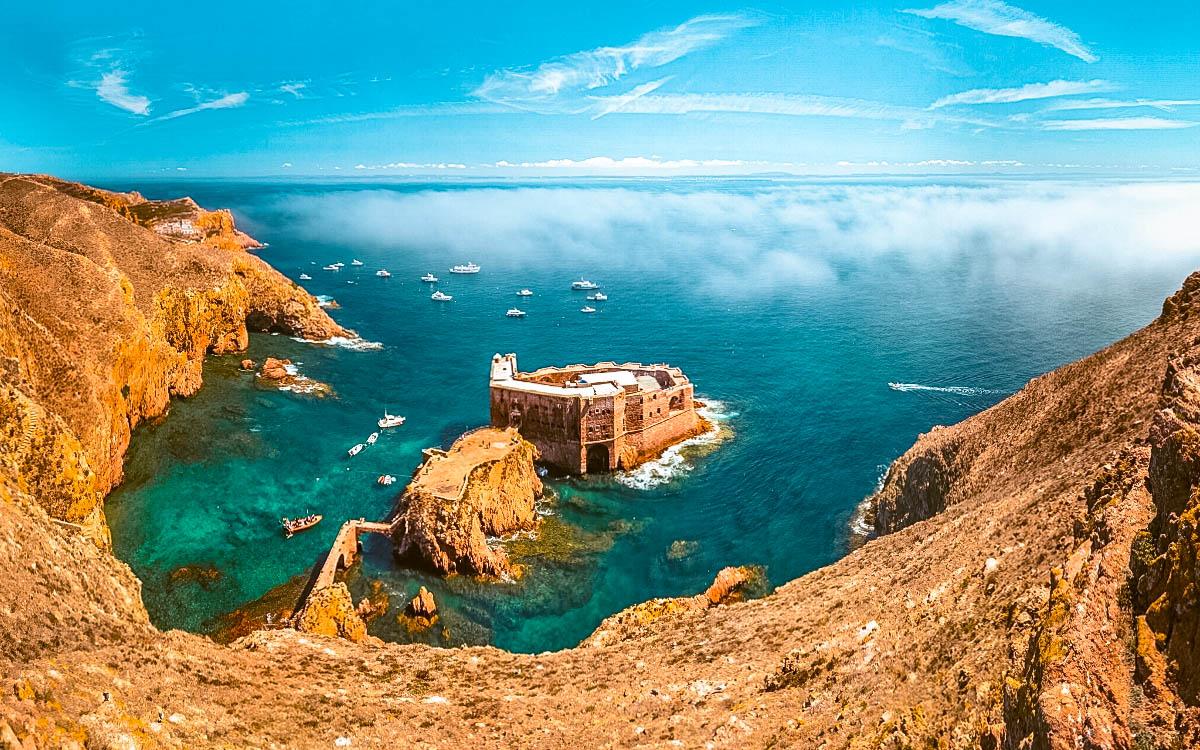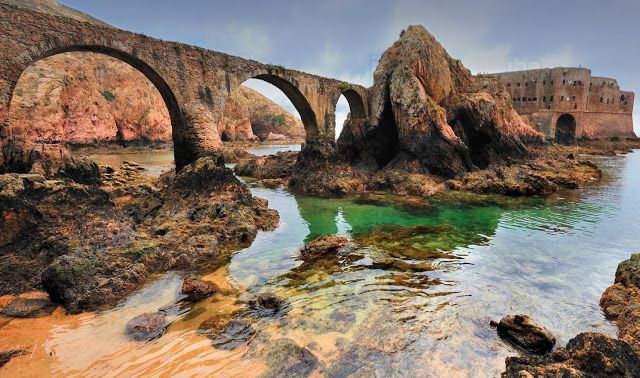Located on the west coast of Portugal, near the westernmost tip of Europe, lies the Berlengas Archipelago. This group of islands and islets in the Atlantic Ocean is about 10 kilometers from the town of Peniche. Known for its stunning natural beauty and rich historical significance, the Berlengas Archipelago is home to the impressive Fort of Saint John the Baptist, a testament to Portugal’s maritime heritage.
The Berlengas Archipelago: A Natural Wonder

The Berlengas Archipelago consists of three groups of granite islands and islets, with Berlenga Grande being the largest and only inhabited island. The other main groups are Estelas and Farilhões. These islands are characterized by their rugged coastlines, towering cliffs, and numerous caves carved by marine erosion. The highest point reaches up to 95 meters above sea level, offering breathtaking views of the surrounding ocean.
Berlenga Grande, the largest island, measures 1.5 kilometers in length and 0.8 kilometers in width, covering an area of over 75 hectares. The island is surrounded by smaller islets and rock formations, creating a picturesque and dramatic landscape.
Historical Significance

The history of the Berlengas Archipelago dates back to antiquity. The second-century geographer Claudius Ptolemy mentioned the archipelago in his Geographia as Londobris, likely derived from londo-briga, meaning “fortress of Londos.” The earliest traces of human presence on the islands can be attributed to the Phoenicians and Greeks, who used them as a refuge while sailing these waters.
In the Middle Ages, a monastery was established on Berlenga Grande, although it was later abandoned due to frequent pirate attacks. Permanent settlers arrived in the 15th century, marking the beginning of continuous habitation on the island.
A Natural Reserve and UNESCO Biosphere

The natural isolation of the Berlengas Archipelago has preserved an ecosystem of great biological richness. The islands are home to colonies of seabirds and several endemic plant species. In 1981, the archipelago was declared a Natural Reserve, and in 2011, it was designated a Biosphere Reserve by UNESCO. Remarkably, it was Portugal’s first protected area, established by royal decree in 1465.
The Fort of Saint John the Baptist

Perched on an islet on the southeast coast of Berlenga Grande island is the Fort of Saint John the Baptist, also known as the Berlengas Castle. King John IV of Portugal ordered its construction in 1651 as part of the coastal defenses against attacks by Barbary pirates and enemy fleets from Spain, France, and England. The strategic location allowed for control over both the bay of Peniche and the entire archipelago.
The fort was built using the ruins of a previously abandoned 16th-century monastery and connects to the island via a masonry bridge. Its construction involved the use of robust limestone, giving it an imposing presence that has withstood centuries of maritime exposure.
A Fortified Stronghold

In 1655, while still under construction, the fort withstood a siege and bombardment by an Ottoman fleet. In 1666, it faced an attack by a Spanish fleet of 15 ships, which eventually conquered the fortress, allegedly with the help of a deserter. Despite this, the fort’s strategic significance remained intact, and it continued to play a crucial role in protecting the Portuguese coast.
The fort has an irregular octagonal polygonal layout, adapting to the islet’s morphology. It features two stories with narrow vaulted corridors and embrasures for artillery. The north and west sides are marked by windows, while the south and east sides open up for artillery.
Decline and Restoration
After centuries of service as part of Portugal’s coastal defense system, the fort was disarmed and abandoned in 1847. In the mid-20th century, it was restored, classified as a national monument, and converted into a picturesque hostel that still accommodates visitors today.
Conclusion
The Fort of Saint John the Baptist stands as a stoic sentinel on Berlenga Grande, a rugged island off the coast of Portugal. Built in the 17th century, this fortress served as a crucial defensive bastion against pirates and foreign invaders. Its strategic location atop sheer cliffs provided commanding views of the surrounding sea, ensuring the safety of nearby Peniche and the mainland.
Beyond its military significance, the fort is steeped in maritime lore and natural beauty. Surrounded by crystal-clear waters and teeming marine life, the island offers unparalleled opportunities for snorkeling, diving, and exploration. Today, the Fort of the Berlengas stands as a testament to Portugal’s rich maritime heritage and a beacon of conservation and eco-tourism, reminding us of the importance of preserving our natural and historical treasures for generations to come.
